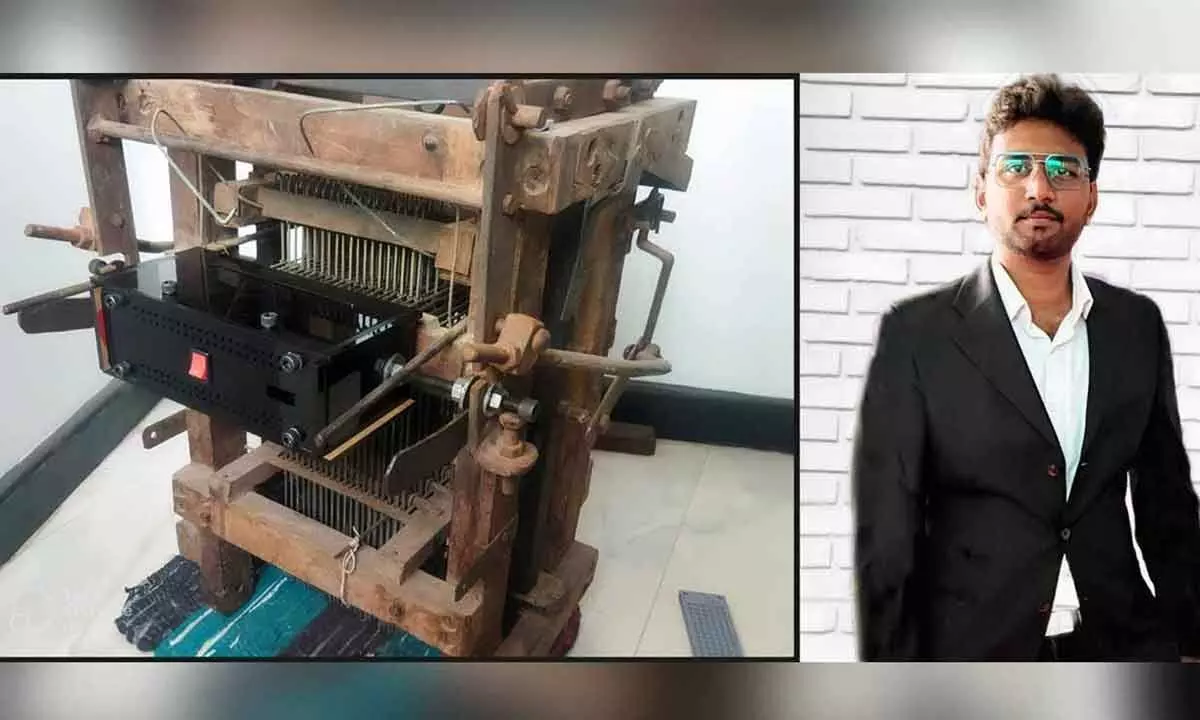This Indian student creates digital loom to help revive handloom sector

An innovation by a budding entrepreneur in the country can help digitise textile designing in India and minimise production costs and save time, which may help revive the struggling handloom sector.
An innovation by a budding entrepreneur in the country can help digitise textile designing in India and minimise production costs and save time, which may help revive the struggling handloom sector.
S Nishanth, 23, has digitised the 'Jacquard' loom. His innovation, the Novatex Electrical Cylinder, simplifies the process of weaving designs on saris and dhotis, eliminating dependency on thousands of punch cards, which need reconfiguration for every new design.
"I faced multiple challenges and failures over the past two years, optimising the final product. It involved hundreds of major and minor alterations," said Nishanth.
"The latest version is probably the most efficient we have devised, being five times smaller, 10 times faster and costs only half to manufacture, as compared to the original prototype," added Nishanth, who has won several awards for his innovations.
An informal chat between Nishanth and his college senior Pranesh in January 2020 on weavers' problems set him on the course to work out a solution.
Over the next two years, he conceptualised and perfected the Novatex Electrical Cylinder, to digitise the working of aJacquard' loom.
Nishanth finished his B.Tech in Mechatronics from Salem-based Sona College of Technology in Tamil Nadu.
"This innovation will find application in the textile industry and will benefit the fashion designers as well as the small weavers in producing more designs at lower cost," said Chocko Valliappa, vice chairman, Sona Group of Institutions.
Nishanth's startup called Novatex Technology is all set to manufacture the loom's digitised version next year, in tie-up with Sona Incubation Foundation and IIT Madras Incubation Cell (IITMIC) headed by IIT-M professor, Dr Ashok Jhunjhunwala.
The IITMIC has incubated 241 startups to date, valued at Rs 11,000 crore, besides generating more than 5,200 jobs over the last eight years.
"The Sona group of institutions have been preparing engineering talent with a key focus on R&D and industry academia partnership. We are happy to incubate Sona College alumnus Nishanth's innovative entrepreneurial project at IIT-M IC," said Jhunjhunwala, also president of IIT-Madras Research Park.
Currently, the usual 7-by-3 inch punch card, described as "a piece of thick card board that holds digital data represented by the presence or absence of holes in predefined positions," to determine specific patterns, help create designs, especially on saris and dhotis, in the power and handloom sector. However, the whole process is expensive and cumbersome.
A single new design requires as many as 2,000 punch cards, each costing Rs 4 apiece totalling Rs 8,000. In the rainy season, the cards tend to absorb moisture and need drying. The cost escalates if more elaborate patterns are preferred.












